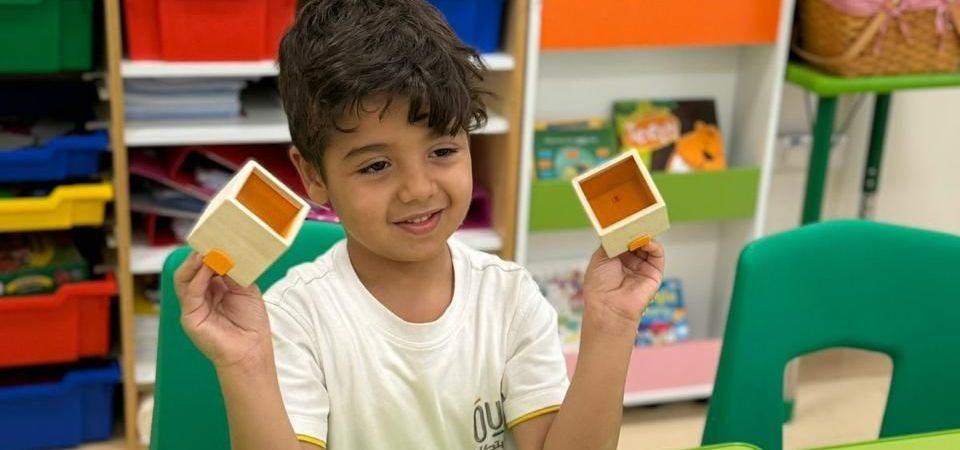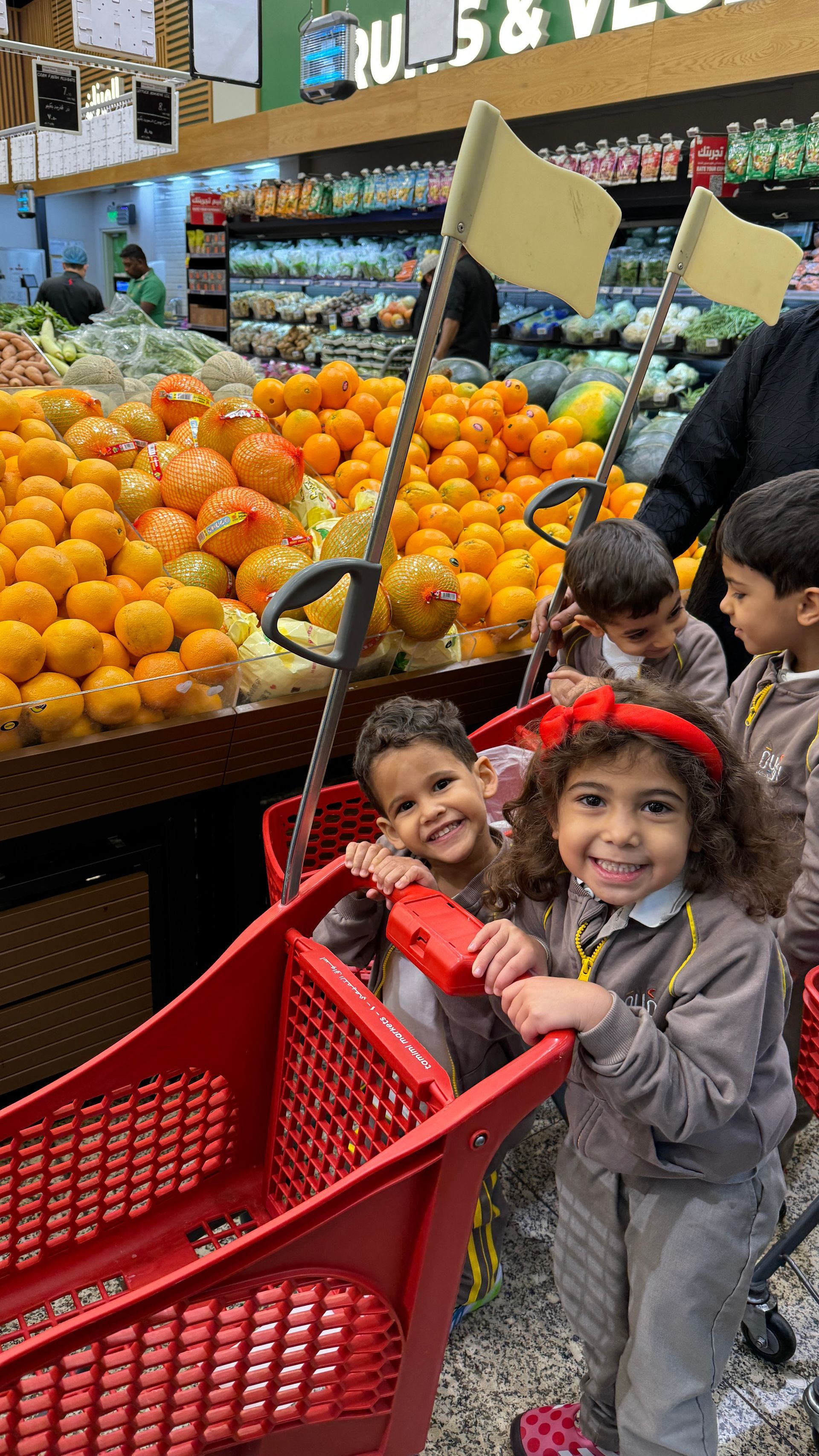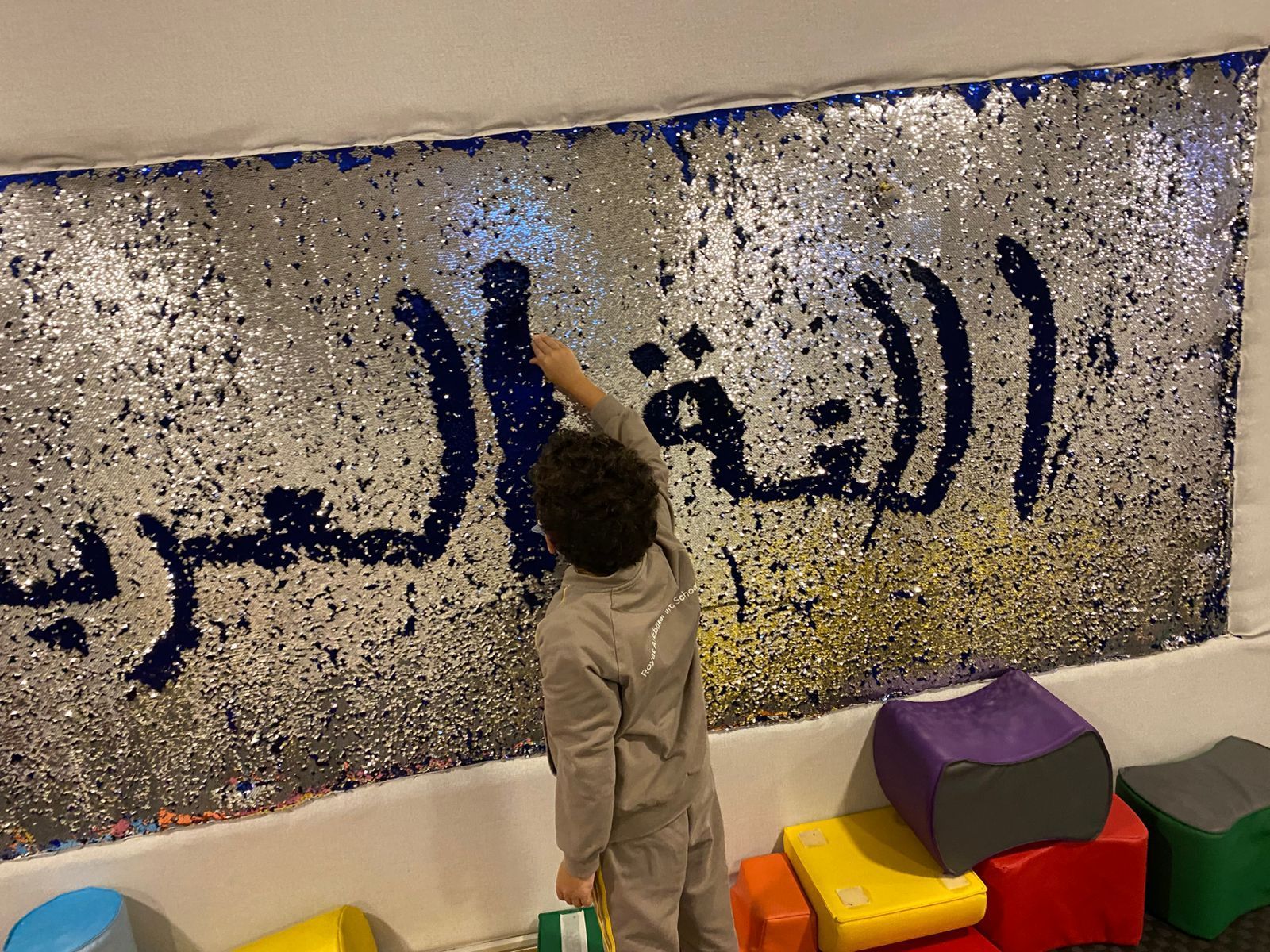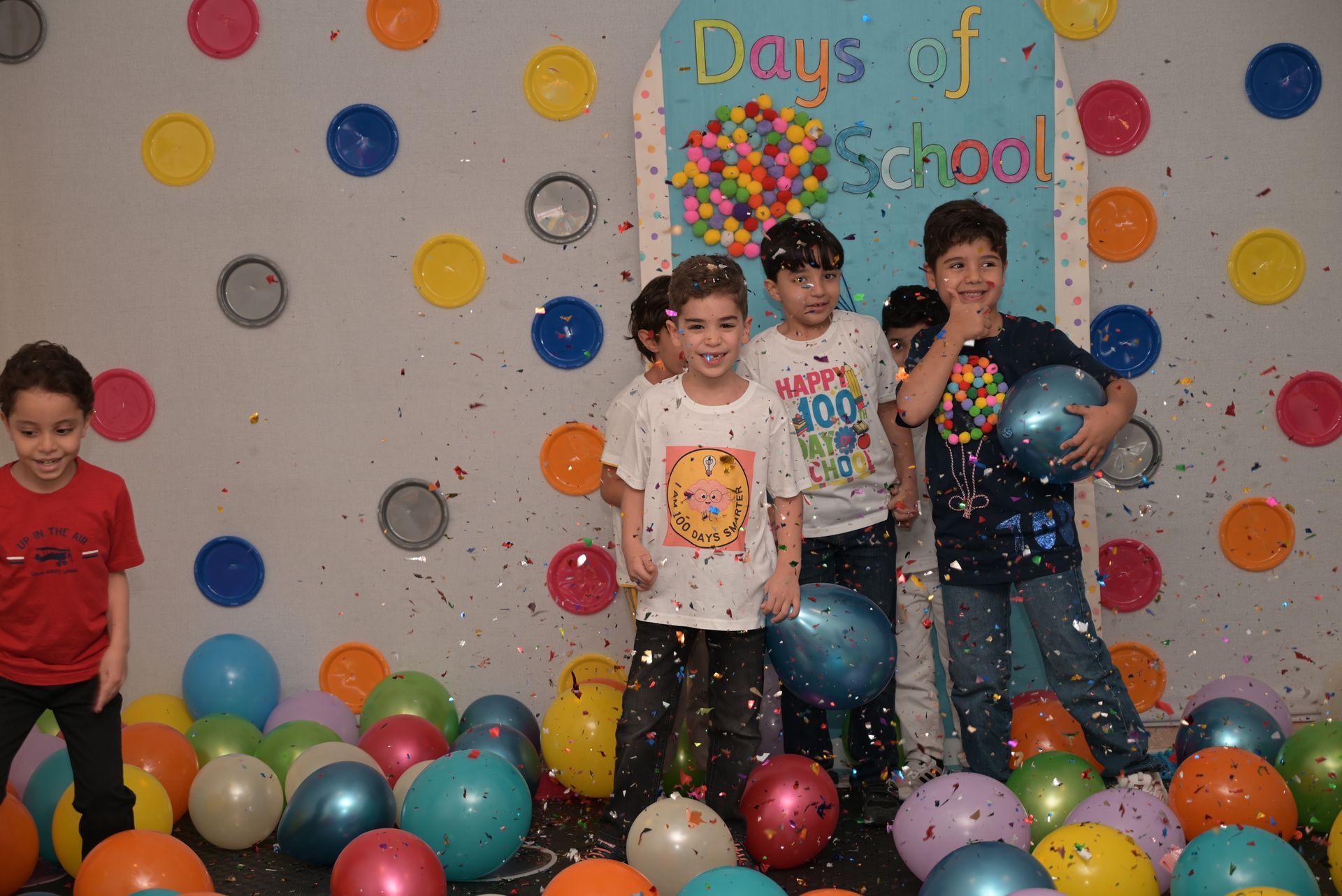Teaching Emotional Intelligence in Primary Education: Practical Ideas for Young Learners
Understanding Emotional Intelligence in Children
When parents or teachers ask what is emotional intelligence for kids, they’re exploring how children recognize, understand, and manage emotions. In primary education, emotional intelligence helps children express feelings clearly, develop empathy, and interact kindly. It’s as vital as reading or math in shaping balanced, happy, and confident learners.
Why Emotional Intelligence Matters in Primary Education
For primary students, emotional development supports social harmony and classroom success. When children understand their emotions, they communicate better, solve problems peacefully, and build lasting friendships. In the best international schools, educators treat emotional intelligence as a core subject—one that nurtures both academic progress and personal well-being.
Early Childhood Education and Emotional Growth
Emotional learning begins in early childhood education. Young children need gentle guidance to recognize feelings like joy, frustration, or sadness. Teachers can model calm communication, empathy, and kindness. This emotional foundation makes it easier for elementary and primary students to handle challenges with resilience and self-confidence later in life.
Making Emotions Visible for Primary Students
Visual tools make emotions easy to understand. Use emotion charts, feeling wheels, or expressive faces to help children name their emotions. When primary students can see feelings represented visually, they become more comfortable identifying and discussing them—a key step toward developing strong emotional intelligence from a young age.
Morning Feelings Check-Ins
Start each day with a classroom check-in. Ask children to share how they feel using color cards or emoji magnets. These daily routines help normalize emotions in the classroom and teach empathy. Personalized learning in emotional development means every child’s feelings are valid and respected.
Using Stories to Teach Emotional Intelligence
Stories make emotional lessons meaningful. Reading books about friendship, bravery, or kindness allows children to see emotions in action. Ask guiding questions such as, “How did the character feel?” or “What could they do differently?” This approach turns literature into an emotional intelligence curriculum for young learners.
Role-Play for Real-Life Emotions
Role-playing activities allow children to practice emotional responses safely. Recreate real scenarios—like losing a game or helping a friend. These
emotional intelligence activities for children teach perspective-taking, empathy, and problem-solving. In both primary and elementary settings, role-play helps kids internalize lessons they’ll use beyond the classroom.
Expanding Emotional Vocabulary
In primary education, building a rich emotional vocabulary is essential. Move beyond “happy” and “sad.” Introduce words like “disappointed,” “grateful,” or “worried.” Use classroom walls to display emotion words. When primary students can describe their feelings precisely, they communicate more effectively and resolve conflicts with greater understanding.
Listening Skills and Emotional Awareness
Listening is central to emotional intelligence. Model attentive listening by making eye contact and responding thoughtfully. Encourage students to listen without interrupting. In the best international schools, educators emphasize listening as a life skill—helping children build trust, respect, and empathy toward their peers and teachers.
Modeling Emotional Regulation
Teachers play a powerful role in demonstrating self-control. When educators handle stress calmly, students learn to do the same. If something goes wrong, verbalize your response: “I feel frustrated, but I’m calming myself with deep breaths.” This real-time modeling turns emotion management into practical, personalized learning.
Creating Calm Corners in the Classroom
A calm corner offers a safe place for primary students to manage strong feelings. Include soft cushions, picture books, and stress-relief tools. Encourage students to visit this space when overwhelmed. Calm corners teach self-regulation—a cornerstone of emotional intelligence in early childhood education and beyond.
Mindfulness for Elementary and Primary Students
Mindfulness helps children become aware of their inner world. Practice short breathing exercises or guided visualizations. For example, ask them to imagine a calm ocean as they breathe. This promotes emotional balance and focus—essential skills that enhance both learning and mental well-being in primary education settings.
Teaching Empathy Through Everyday Situations
Empathy is understanding how someone else feels. Use classroom examples: “How would you feel if your friend was left out?” Encourage children to notice others’ emotions and offer kindness. These simple
emotional intelligence activities for children make empathy tangible and easy to practice in daily classroom life.
Positive Approaches to Anger
Children often struggle with anger. Teach calm-down techniques like counting to ten or taking deep breaths. Create discussions about what triggers anger and how to manage it. Personalized learning here means finding strategies that work for each student—helping them handle frustration with confidence and care.
Celebrating Emotional Growth
Recognize emotional milestones as you would academic ones. When a child manages conflict peacefully or comforts a friend, celebrate it. Positive reinforcement strengthens emotional habits. In primary education, celebrating kindness, patience, and empathy builds a culture where emotional intelligence is respected as true achievement.
Circle Time for Emotional Sharing
Circle time gives children a safe, structured moment to talk about feelings. Encourage sharing moments of joy, fear, or gratitude. Listening to classmates helps children realize that emotions are universal. This open sharing builds emotional resilience, empathy, and community among primary students in any school environment.
Problem-Solving with Emotional Awareness
Conflict resolution becomes a learning opportunity when children pause, identify feelings, and find fair solutions. Use a simple four-step model: stop, think, talk, and choose. Teaching these steps turns emotional challenges into moments for growth—developing skills essential for healthy relationships in both primary and elementary years.
Reflection and Emotional Learning
After emotional moments, invite reflection. Ask, “How did that make you feel?” and “What might you do differently next time?” Reflection strengthens self-awareness and accountability. In the best international schools, reflective practice is part of the emotional intelligence curriculum for young learners, fostering lifelong self-understanding.
Art and Music as Emotional Outlets
Art and music naturally support emotional development. Encourage students to draw their moods or choose songs that match how they feel. Creative expression allows children to process emotions safely. These enjoyable
emotional intelligence activities for children nurture imagination while strengthening emotional awareness in primary education.
Emotion Journals for Primary Students
Journaling helps children process feelings privately. Offer prompts like “Today I felt proud because…” or “Something that made me happy was…” For older primary or elementary students, writing or drawing feelings builds emotional literacy and reflection—a valuable component of personalized learning.
Teaching Gratitude
Gratitude fosters optimism and emotional stability. Start a “gratitude wall” or daily sharing routine where students mention one good thing about their day. Gratitude exercises improve classroom mood and emotional health, reinforcing that happiness often comes from appreciation, not perfection—a key idea in emotional education.
Teamwork and Cooperation
Group projects teach communication and emotional balance. Assign collaborative tasks that require sharing, listening, and compromise. When primary students work together toward a goal, they practice patience and empathy. These real-world lessons support both academic and emotional success in early childhood and elementary classrooms.
Recognizing Body Signals of Emotion
Teach children to notice how emotions feel in their bodies—tight shoulders, racing heart, or butterflies in the stomach. Recognizing physical signals helps them self-regulate before emotions escalate. This awareness supports emotional health and forms a practical part of any emotional intelligence curriculum for young learners.
Games for Emotional Intelligence
Use play to teach emotions. Try “feelings bingo,” charades, or guessing emotions through facial expressions. These
emotional intelligence activities for children make learning fun and memorable. Games engage different learning styles, aligning with personalized learning approaches that ensure emotional lessons stick for every child.
Building Trust and Safety in the Classroom
Emotional growth flourishes in a safe environment. Set clear rules for kindness and respect. Prevent teasing and celebrate inclusion. When primary students feel emotionally secure, they open up and learn better. Creating this atmosphere is a hallmark of quality primary education and caring teaching.
Guiding Children Through Transitions
Changes—like new teachers or classrooms—can cause anxiety. Discuss transitions early and explore coping strategies. Reassure students that change brings growth. In both early childhood education and elementary levels, helping children handle transitions calmly strengthens adaptability and emotional resilience.
Curiosity About Emotions
Encourage curiosity rather than judgment toward emotions. Ask questions like “What might your anger be telling you?” or “Why do you think you felt nervous?” This approach builds emotional intelligence by helping children see emotions as helpful signals rather than problems to avoid or suppress.
Handling Disappointment Gracefully
Disappointment teaches resilience. Talk about it openly. Share your own examples and discuss healthy ways to cope. Help children understand that setbacks are temporary and part of learning. In primary education, these conversations turn emotional pain into opportunities for strength and perseverance.
Teaching Self-Compassion
Children often judge themselves harshly. Teach gentle self-talk like “I’m learning” or “Everyone makes mistakes.” Encourage students to treat themselves as kindly as they treat friends. This emotional self-care skill promotes confidence and inner peace, both essential to a child’s well-being and long-term emotional intelligence.
Creating a Culture of Kindness
Celebrate kindness daily. Encourage children to notice and share kind acts. Create a “kindness board” highlighting thoughtful behavior. When kindness becomes part of classroom culture, empathy and cooperation thrive—essential values in both primary education and early childhood emotional development.
Supporting Quiet or Shy Students
Not every child expresses feelings easily. Offer private activities like journaling or drawing. Acknowledge small emotional breakthroughs and avoid pressure. Personalized learning means respecting each child’s pace and personality, ensuring every student—outgoing or reserved—develops healthy emotional awareness.
Teaching Emotional Boundaries
Boundaries protect feelings and respect others. Teach simple language like “I don’t like that” or “Please stop.” Practice these phrases through role-play. Emotional boundaries empower primary students to express themselves confidently, creating safer peer relationships and stronger self-respect in elementary classrooms.
Building Self-Confidence and Identity
Help children discover their strengths. Create posters celebrating personal qualities like “I’m creative” or “I’m helpful.” A strong sense of identity supports emotional balance and courage. In the best international schools, self-confidence is seen as a vital part of emotional and academic success.
Conflict Resolution Skills
Teach calm, respectful communication during disagreements. Encourage “I” statements—like “I felt upset when…”—to avoid blame. Guide children to find win-win solutions. Practicing emotional dialogue equips primary students to navigate friendships and challenges gracefully, building emotional intelligence through every social interaction.
Emotional Intelligence and Academic Success
Emotionally intelligent students perform better academically. They focus longer, cooperate more, and handle stress constructively. Integrating emotional lessons into academic subjects—like discussing characters’ feelings in stories or teamwork in science—turns every lesson into part of a meaningful emotional education journey.
Adapting Emotional Learning to Individual Needs
Each child learns emotional skills differently. Some prefer talking, others art, music, or play. Teachers should adapt lessons using multiple formats. This flexible, personalized learning ensures that every primary student builds emotional intelligence in a way that fits their unique strengths and preferences.
Peer Support and Mentorship
Pair older and younger students in buddy programs to encourage empathy and support. When children teach and help each other, emotional understanding deepens naturally. This approach reflects how many best international schools promote leadership, compassion, and community through shared emotional learning experiences.
School-Wide Emotional Learning
A whole-school approach reinforces emotional values everywhere. Create posters, assemblies, and activities around empathy, respect, and cooperation. Emotional intelligence grows stronger when it’s woven into the school culture, not limited to classroom lessons—a hallmark of forward-thinking primary education systems.
Teachers’ Emotional Well-Being
Teachers’ emotions influence the classroom atmosphere. Practicing mindfulness, self-care, and reflection helps educators stay balanced. When teachers model calmness and empathy, students mirror those behaviors. Emotional intelligence in primary education begins with emotionally healthy educators who lead by example.
Additional ideas:
- Spend time outside. Nature supports calmness and mindfulness.
- Goal setting: Help children set small emotional goals, such as “I’ll practice deep breathing when angry.”
- Use positive reinforcement. Positive reinforcement motivates children to repeat good choices.
- Handle mistakes positively. Teach children that mistakes are opportunities, not failures. Ask, “What could you try next time?”
- Collaboration With Parents. When parents and teachers use the same emotional language, children feel consistency and support.
Lifelong Impact of Emotional Learning
Teaching emotional intelligence to primary students builds skills that last a lifetime. These children grow into compassionate leaders, thoughtful friends, and resilient adults. Whether in local or best international schools, prioritizing emotional intelligence ensures a brighter, kinder, and more understanding generation for the future.















